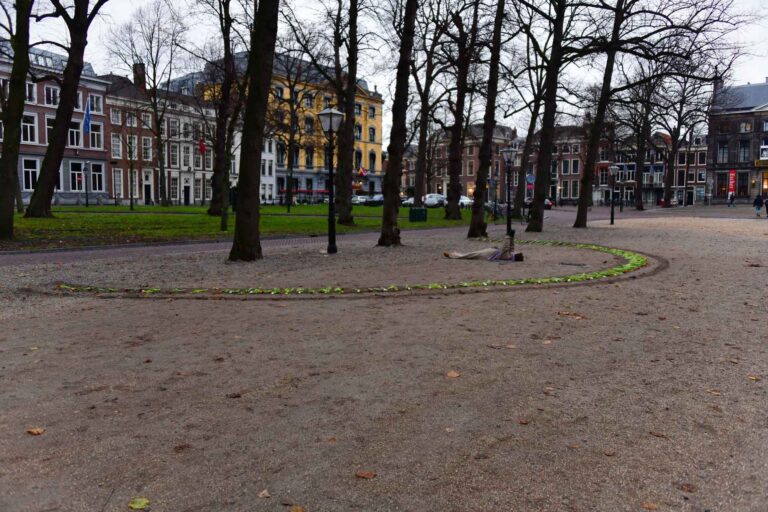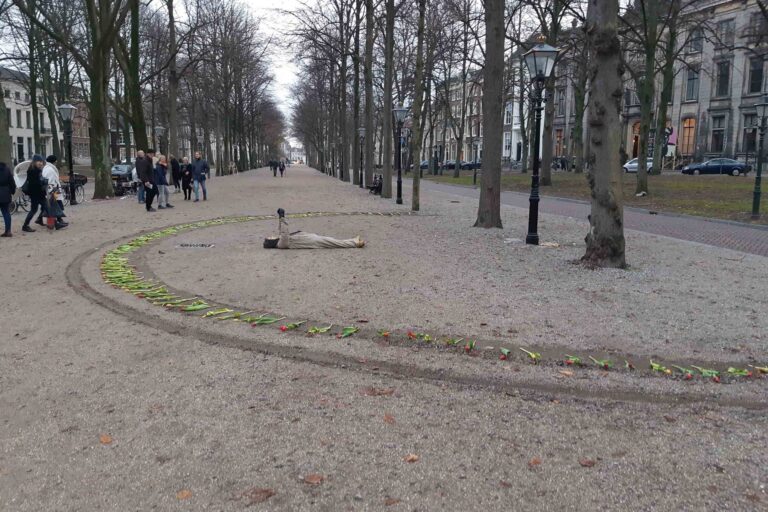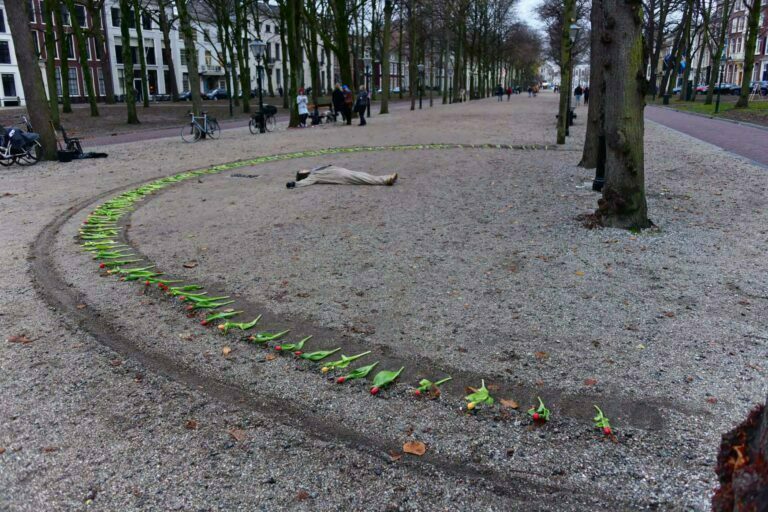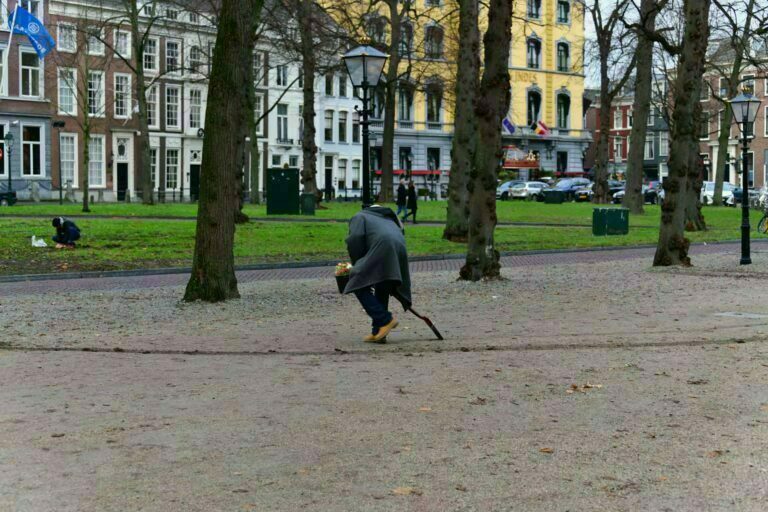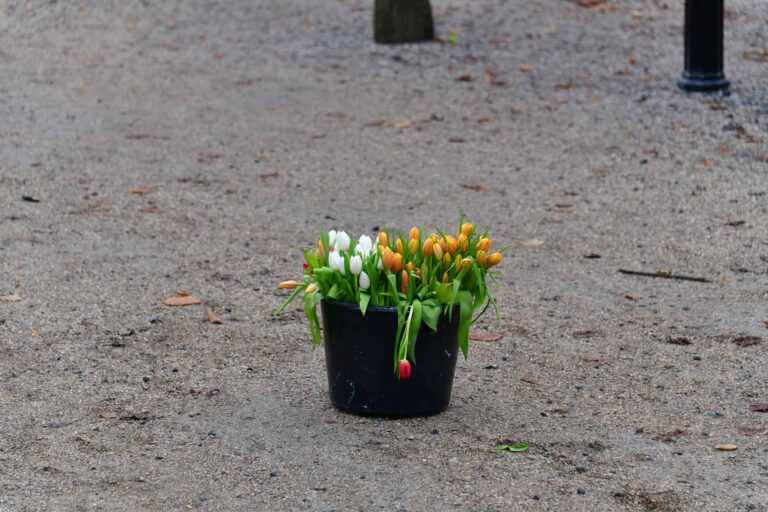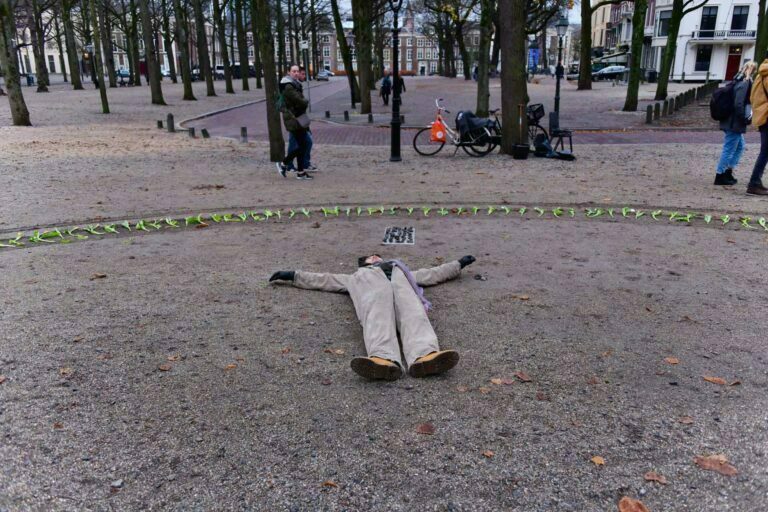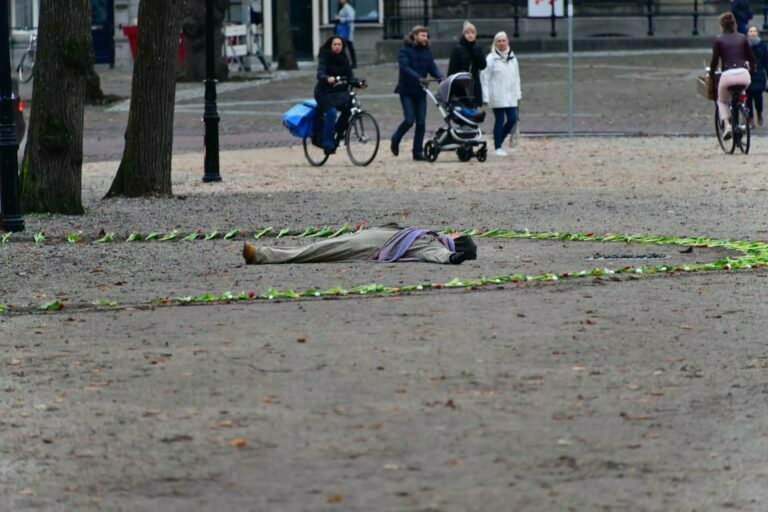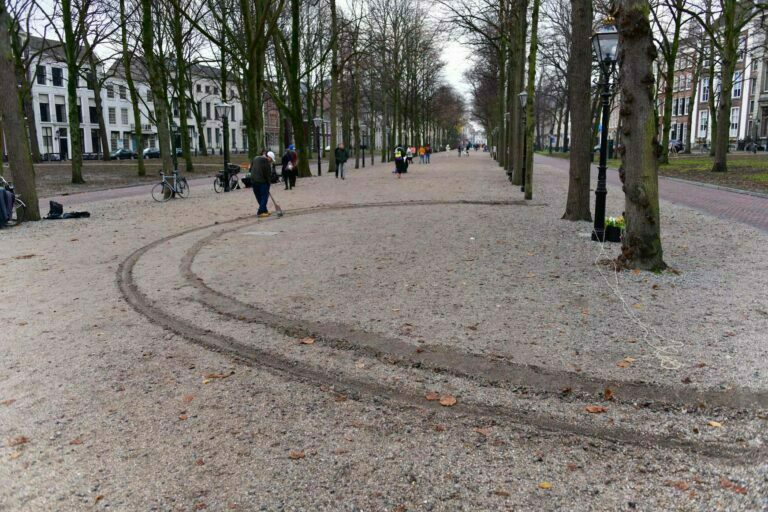War Flowers
(2018) 2h
Japanese occupation of Indonesia during World War II
This performance of placing tulips in a half circle to commemorate the Japanese occupation of Indonesia during World War II holds a profound essence and inner significance.

Tulips are often associated with various meanings, including love, respect, and beauty. In this ritual, tulips are love and respect for those who suffered during the occupation and for those who lost their lives. It also represents the beauty that arises from remembrance and paying tribute to history.
The tragedy that arose from the occupation
The half circle of tulips is unity and togetherness. It serves as a reminder that despite the hardships and tragedy that arose from the occupation. The community comes together to commemorate and acknowledge what happened. It is the importance of solidarity and collectively sharing the burden of the past.
Keep alive, It reminds people of what happened
By performing this, the memory of the occupation is kept alive. It reminds people of what happened, so that the same mistakes are not repeated, and the past is not forgotten. It contributes to preserving history and passing on knowledge to future generations.
Inner reflection
The performance provides an opportunity for inner reflection and meditation. It invites deeper introspection about the consequences of war and occupation, and it offers a chance to contemplate human resilience and the desire for peace and freedom.
Cultivate empathy and understanding
Doing this performance can help cultivate empathy and understanding for those affected by the occupation. It allows people to empathize with the experiences of others and show respect for their struggles and pain.
Hope for a better future. By acknowledging and commemorating the past, it expresses the desire to achieve peace, freedom, and justice for all people, so that such tragedies do not happen again.
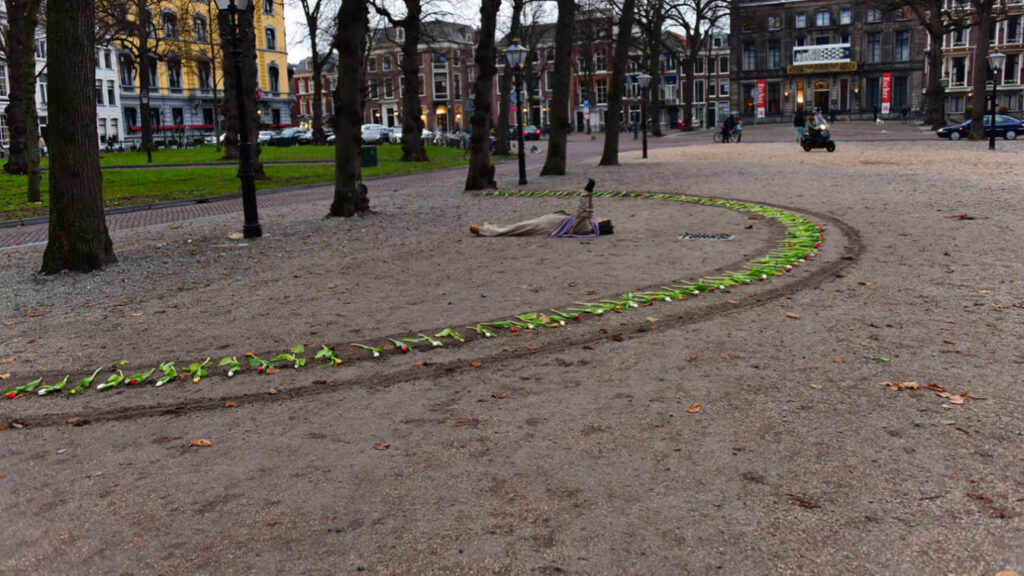
Compassion, and hope
Tulips in a half circle carry a profound meaning of love, respect, unity, history, compassion, and hope. It calls for commemoration, reflection. A collective effort to ensure that the consequences of the occupation are not forgotten and that steps are taken to create a better future for everyone.
December 1st 14.00 – 16.00 International Live Event outdoor Location December 1st: Het Lange Voorhout
In Time! It is about experiencing the present moment, we offer a temporary respite at the hectic pace of our modern life and reflect on how we deal with our time.
It is rare for us to give ourselves the time to think about time as an idea in our daily lives,
as a structure that determines what we do, to consider that time is how we measure our success and our failures; time is the characteristic of both the beginning and the end of our lives.
Time can be considered, reconsidered, accumulated and broken down, return and being deleted.
Time can be approached in different ways: personal, methodical or scientific. With a poetic, practical, playful or meditative approach.
You can measure time by, for example; to look at material processes of growth and decay, with mechanical devices, through the mind, with the body, or regarding to specific actions. We are inspired by Marilyn Arsem; 100 Ways Considering Time. In which she spent a hundred days in the Museum of Fine Arts Boston, together with the public, for a period of 6 hours, exploring the nature of time.


